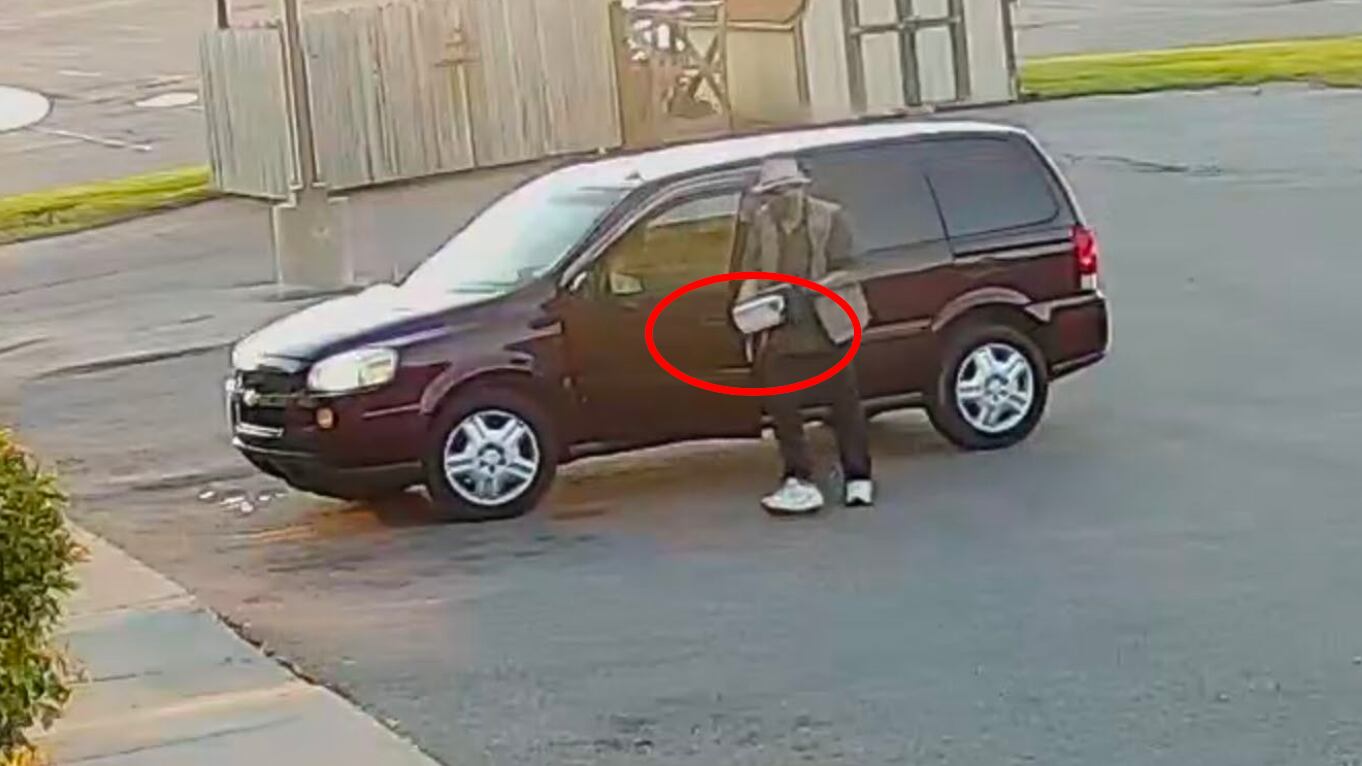A Michigan man accused of planting pipe bombs outside AT&T and Verizon stores and leaving threatening letters at area cell towers was angry over “all of the immoral content, including pornography, on phones and cable television,” according to a criminal complaint filed Tuesday in Detroit federal court.
John Douglas Allen, 75, is facing charges of extortion and attempted damage or destruction of buildings used in interstate commerce, the filing states. He was arrested Monday night, Justice Department spokeswoman Breane Warner confirmed to The Daily Beast.
“Our office will not be offering any comment besides what is already on the public record at this time,” Warner said.
ADVERTISEMENT
If convicted, Allen, a retired miner—whose own cell service is provided by Verizon, according to public records—faces up to 20 years in prison. Reached by phone, Allen’s lawyer, Stevens J. Jacobs, declined to provide The Daily Beast with a statement or comment on the case.
Allen’s arrest came less than a week after improvised explosive devices were discovered at a Verizon store in Cheboygan, Michigan and an AT&T store in Sault Ste. Marie. They had been placed in U.S. Postal Service Priority Mail boxes, which were sealed with black duct tape. Each of the IEDs “consisted of a metal pipe nipple with two metal end caps,” and contained “metal spheres and nails,” according to the complaint.
“Hardened objects such as these enhance the explosive effect, propelling fragments of metal outwards at high velocities which can cause additional damage and injuries,” states the complaint.

One of the pipe bombs allegedly planted by Allen.
Department of JusticeA set of handcuffs had been placed in both boxes. The initials “HJ” were scrawled across one. “Handcuff Johnny” was written on the other. They each indicated that this was the “last warning,” and that the next delivery would occur during business hours. The acronym “CMT” was also found on the two boxes, which was identical to one seen on a series of notes found in late August at cell towers throughout Michigan’s Upper Peninsula.
“The letters each indicate that they are from the ‘Coalition for Moral Telecommunication (CMT)’ and were addressed to ‘AT&T, Verizon, and all other Carriers,’” according to the complaint. “In the letters, CMT claimed to be ‘almost thirty strong’ and was ‘prepared to travel throughout this Country and begin distroying [sic] inner city tower communication’ unless several demands were followed. One demand was that all ‘telecommunication containing immoral content must be stopped,’ which includes cursing, pornography, and ‘all manner of indecent communication.’ This demand had a time requirement of ‘six months.’ Another demand was payment of $5 million, which had a time requirement ‘within 180 days.’ The letters also noted that if one of its members were arrested, then ‘your problems will begin’ and the ‘price will go up one hundred times.’ The group claimed in the letter that its ‘reach’ was in 27 states. The letters also had ‘CMT 5101520TG’ at the bottom of them.”

The first page of a demand letter allegedly left at a cell tower by Allen.
Department of JusticeThe notes were placed inside polka-dot envelopes, which were placed inside ziploc bags, which were zip-tied to fences at each cell tower site. A little more than two weeks later, the pipe bombs appeared at the AT&T and Verizon stores.
It only took a few days for modern technology—the apparent focus of Allen’s fury—to help cops zero in on their suspect.
Investigators pored over surveillance video from cameras in the vicinity of the two stores targeted by IEDs. In one segment of footage, they spotted a white man with a limp and a wide-brimmed hat in a sporting goods store adjacent to the AT&T location in Sault Ste. Marie that received the pipe bomb. Video captured by another camera showed the same man placing a box outside the AT&T store about six minutes later. He drove off in a maroon Chevrolet Uplander minivan with the license plate SWFE503, from either California or Washington.

A man believed to be Allen, caught on surveillance video.
Department of JusticeAbout two hours after leaving the scene, the same minivan crossed the Mackinac Bridge, according to the video footage cited in the complaint. This time, agents saw the plate was indeed issued in California. Roughly 30 minutes later, around 10:10 p.m., the same man was seen placing a box outside the Verizon store in Cheboygan.
However, California authorities couldn’t find the plate in their motor vehicles database because it was too old. That’s when investigators noticed the dealership badge on the rear of the car: Richardson Chevrolet Buick in Standish, Michigan.

The dealership badge on Allen’s minivan.
Department of JusticeFBI agents showed up at the dealership, where an employee “provided information on vehicles that had similar characteristics” to the one seen on surveillance video. Several of the maroon Chevy Uplanders were “eliminated from consideration” according to the complaint, because they had either been junked or the registered owners did not match the description of the suspect. But one vehicle seemed promising: a 2006 maroon Uplander owned by John Douglas Allen, whose driver’s license photo looked a lot like the man seen placing the bombs outside the AT&T and Verizon stores.
“John Allen’s license plate also is a disability license plate,” the complaint states. “John Allen, as depicted in the video footage near the AT&T Store in Sault Ste. Marie as well as in video footage from the Verizon Store in Cheboygan, appears to have a limp.”
Investigators then checked a database of automatic license plate readers, which placed Allen’s minivan near the scene of each incident, on the same dates and times. They speculated that Allen had swapped out his actual Michigan plate for a dummy, in an attempt to evade law enforcement.

Allen’s real license plate, captured on camera.
Department of JusticeFBI agents began surveilling Allen at home, and researched his background. They discovered that he had worked at a company called TG Chemicals, which seemed to offer a clue to the “TG” typed on the bottom of the threatening notes left at the cell towers.
On Sept. 20, authorities searched Allen’s home. There, they interviewed his wife, who looked at the surveillance videos and told FBI agents that she was “95 percent sure” that the person in the footage was her husband. He had recently driven to the Upper Peninsula, where the incidents had occurred, and she said that Allen had polka dot envelopes in the house.
When agents sat down to speak with Allen that same day, he confessed to everything, the complaint states. Allen said he started buying the bomb components about a year ago, paying cash at various hardware stores in an attempt to conceal his purchases from police. He stored them on his property, and told agents he “waited a year to build up the courage to place them,” according to the complaint.

A man believed to be Allen outside the AT&T store in Sault Ste. Marie.
Department of JusticeAllen told agents that he was the one who left the threatening letters at the cell towers, and that he wore gloves and used pre-looped zip ties to reduce his chances of getting caught. He also admitted to placing the pipe bombs at the AT&T and Verizon stores, the complaint states. Allen explained that “Handcuff Johnny” referred to his “belief that he (i.e., ‘Johnny’) would end up in handcuffs as a result of his actions.”
“John Allen stated that he created and placed the letters and bombs because he became dissatisfied with all of the immoral content, including pornography, on phones and cable television,” the filing continues. “John Allen advised that he acted alone, and that there is no CMT group composed of multiple individuals.”

One of the envelopes containing a demand letter allegedly written by Allen.
Department of JusticeAccording to agents, Allen admitted to switching the license plates on his vehicle so he could stay under the radar. Allen “obtained the California license plate...at a flea market in Bay City, Michigan,” the complaint says. However, it explains, Allen “stated that he realized that he had made a mistake when he noticed the emblem for the auto dealership on the rear of the vehicle could not be removed.”
He also allegedly told agents that he “sent additional letters, addressed to AT&T and Verizon, to AT&T headquarters. These letters were similar to the letters he left at the cell towers in the Upper Peninsula. However, these mailed letters included instructions on how to pay John Allen.”
The FBI, Michigan State Police, Cheboygan County Sheriff's Office, Cheboygan Police Department, Sault Ste. Marie Police Department, Sault Ste. Marie Tribal Police, the U.S. Coast Guard, U.S. Border Patrol, and ATF worked the case. Allen “advised that within the last few days, as of September 20, 2021, he noticed vehicles he believed were following him,” and as a result, “decided to throw away items, such as the California license plate, in an area away from his residence.”
Allen remains detained, pending his next court appearance this Friday.






